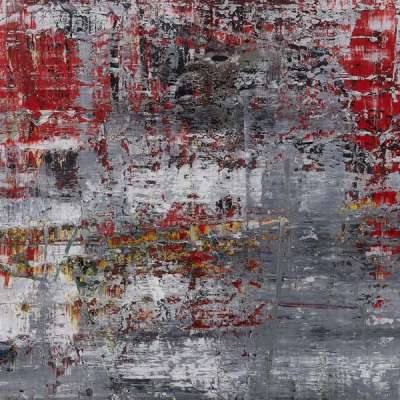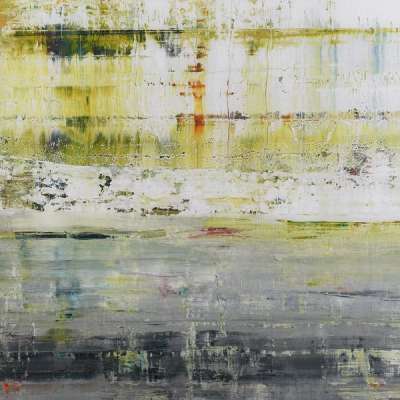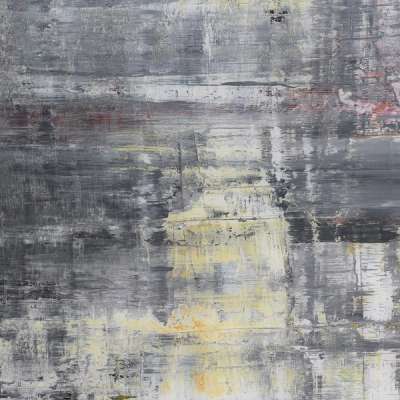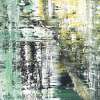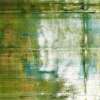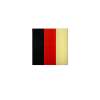Cage
Prints
Gerhard Richter's Cage Prints collection features details from his career-defining Cage paintings. These prints, mounted on diasec, display the painterly depth of the originals, created with Richter's unique squeegee technique. Moreover, the collection epitomizes Richter's engagement with abstraction and his admiration for American avant-garde composer John Cage.
Gerhard Richter Cage Prints For sale
Cage Prints Value (5 Years)
With £75883 in the past 12 months, Gerhard Richter's Cage Prints series is one of the most actively traded in the market. Prices have varied significantly – from £6533 to £47808 – driven by fluctuations in factors like condition, provenance, and market timing. Over the past 12 months, the average selling price was £10840, with an average annual growth rate of -2.51% across the series.
Cage Prints Market value
Auction Results
| Artwork | Auction Date | Auction House | Return to Seller | Hammer Price | Buyer Paid |
|---|---|---|---|---|---|
 Cage (P19-3) Gerhard Richter Unsigned Print | 6 Jun 2025 | Phillips London | £8,500 | £10,000 | £14,000 |
 Cage (P19-1) Gerhard Richter Unsigned Print | 25 May 2025 | SBI Art Auction | £12,750 | £15,000 | £18,000 |
 Cage (P19-2) Gerhard Richter Unsigned Print | 25 May 2025 | Bonhams Hong Kong | £5,525 | £6,500 | £8,500 |
 Cage (P19-6) Gerhard Richter Unsigned Print | 19 Feb 2025 | K Auctions | £7,225 | £8,500 | £10,000 |
 Cage (P19-5) Gerhard Richter Unsigned Print | 18 Jan 2024 | Van Ham Fine Art Auctions | £13,600 | £16,000 | £23,000 |
 Cage (P19-4) Gerhard Richter Unsigned Print | 17 Jan 2024 | Phillips London | £5,950 | £7,000 | £9,500 |
Sell Your Art
with Us
with Us
Join Our Network of Collectors. Buy, Sell and Track Demand
Meaning & Analysis
Born in Dresden in 1932, German artist Gerhard Richter defies straightforward categorisation. Jostling between figurative and abstract art with ease, the evasive, introspective artist has a well-known contempt of all things conventional. The creator of an oeuvre that examines an unusually wide variety of artistic and thematic subjects, Richter was once the recipient of a strictly ‘socialist realist’ training at the Dresden Academy, then located in the former German Democratic Republic. Stultified by the Marxist-Leninist ideology of the East German state, this early formation led Richter to develop a disliking of all things ideological – a conviction both artistic and philosophical that has since led him to strive for what some have called the ‘death’ of painting itself. In the Cage Prints collection, this endeavour is achingly palpable: comprising diasec-mounted giclée prints, the collection showcases elements of Richter’s genre-defining ‘Cage’ paintings, produced in 2006 and first exhibited at the 2007 Venice Biennale.
Characteristic of Richter’s longstanding engagement with abstraction, which began as early as the late 1970s, the complex, sombre Cage Prints contrast with Richter’s bolder, brighter abstract works of the 1990s, such as Abstraktes Bild (P1) (1990). Testament to the maturity of Richter’s unique approach, which involves the use of large-scale squeegees and ‘classic’ paints, such as cadmium and titanium white, these works are some of the artist’s most recognisable and most sought-after on the art market. In Cage (P19-1), turquoise, yellow, red, and green hues are smeared across the canvas in a creative act that is characterised by destruction. Revealing deeper layers of paint concealed below that most recently applied, Richter takes the squeegee and palette knife directly to the canvas surface, allowing for both compositional errors and serendipities. In Cage (P19-4), Richter melds hushed, monochromatic tones with fierce reds and oranges. For American curator and cultural critic Robert Storr, the dramatic convergence of concrete and red serves as a visual metaphor for the Israeli-Lebanese war, which took place in 2006.
Richter has utilised his art to explore as diverse cultural and historical issues as the Second World War, Nazism, German reunification, and the September 11th attacks. In so doing, he has brought the representational regimes of painting and the photograph into productive conversation, eliding the boundaries that separate them in the process. Here, Richter combines two altogether different modes of creation: music and painting. The artist’s cage paintings take their name from that of American composer, artist, and avant-gardist, John Cage, to whom Richter was first exposed whilst a student at the Düsseldorf Academy in the late 1960s. Famed for his use of non-musical instruments and methods as a means of creating – and deconstructing – ‘Western’ music, John Cage struck a chord for Richter, who saw his own practice as a musical equivalent of his own.

